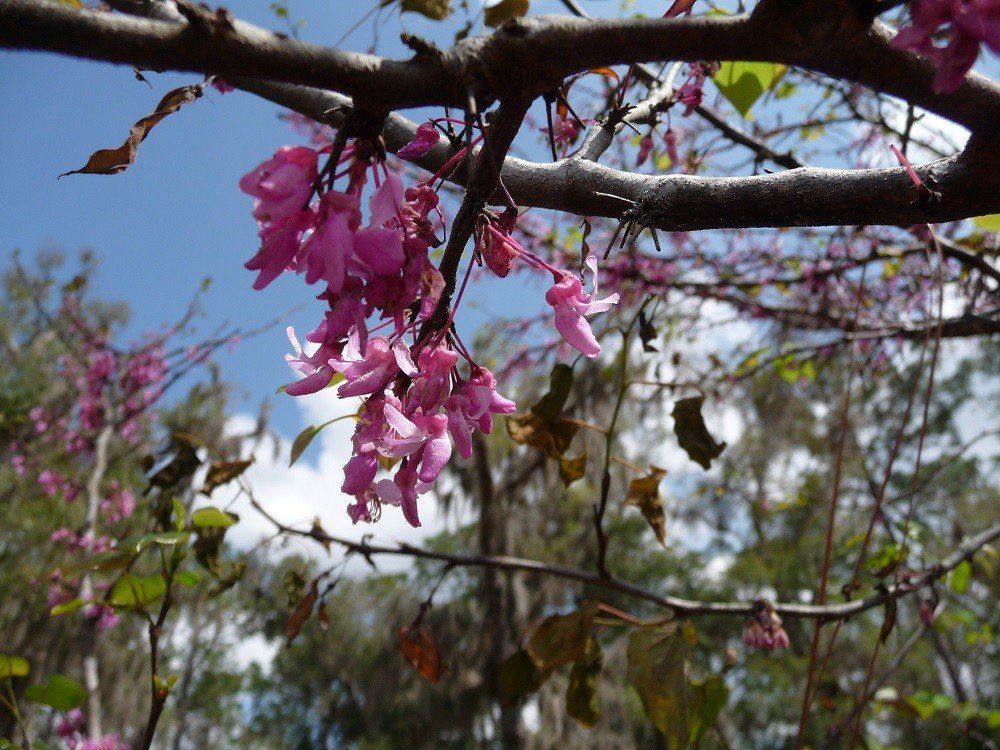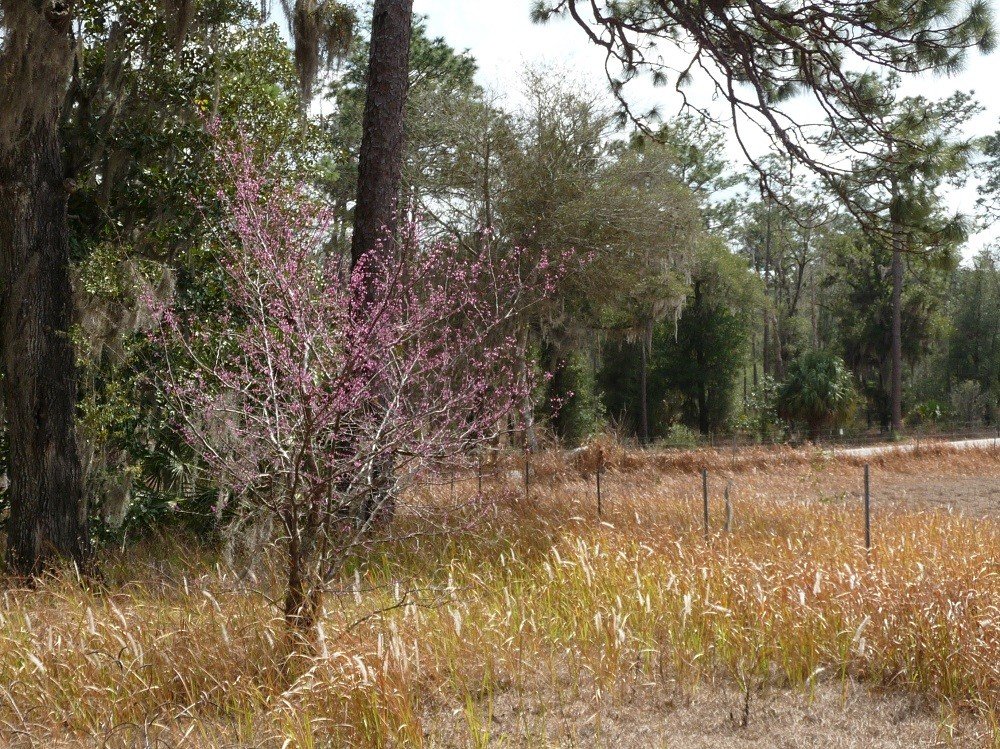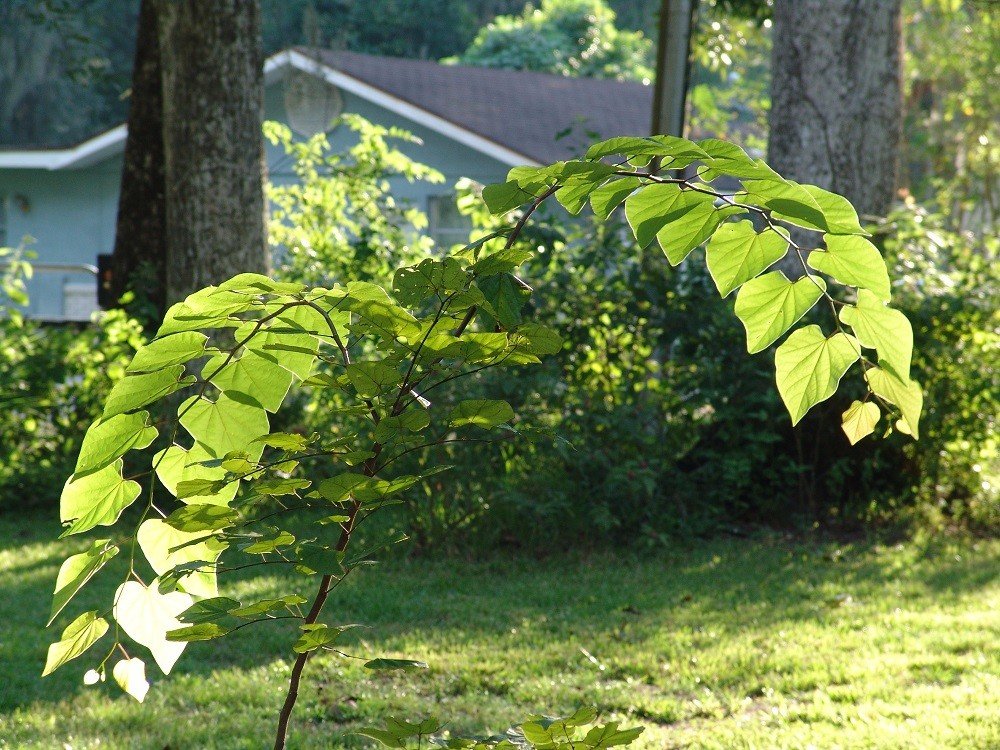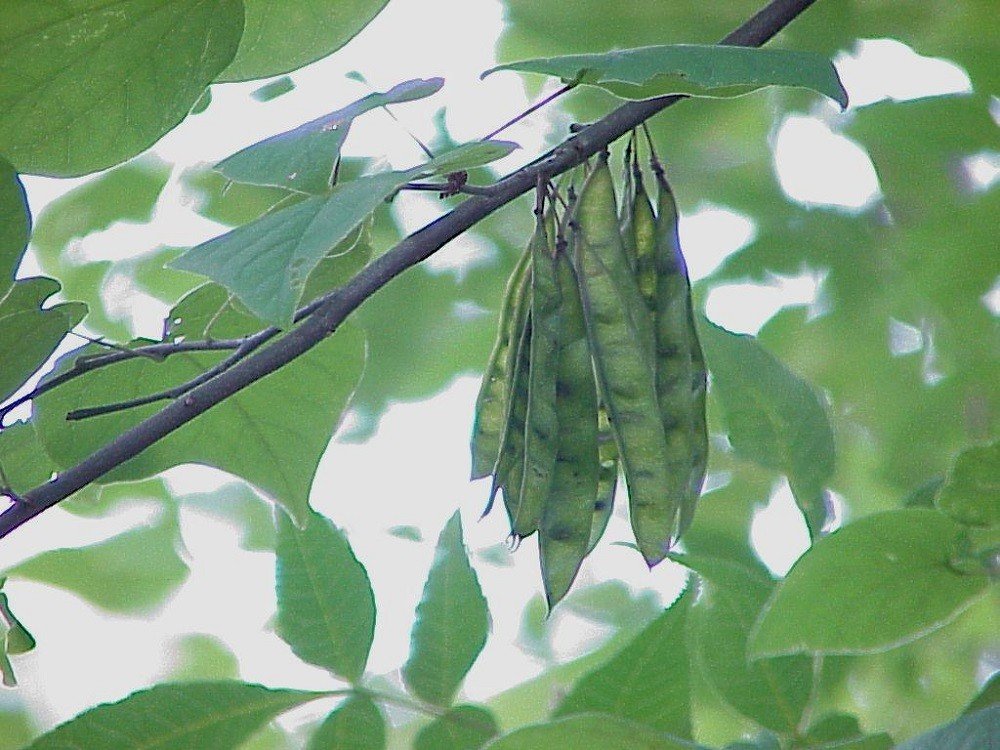Eastern Redbud

Eastern redbud (Cercis canadensis) is also called the Judas tree which appears to be in reference to the tree seeming to blush for having been the tree upon which Judas hanged himself. [1]
It is a small deciduous tree that reaches a height of about 20 to 30 feet. It generally has a single trunk, but can be multi-trunked as well, especially if the tree has been mowed down to the ground at any time, or eaten to the ground by deer and allowed to regrow from the roots.
It occurs naturally in the shade of woodlands, mesic hammocks, and roadsides. It can be found in riparian woodlands, but high enough from the waterline to be in well-drained soils.
In the home landscape it grows in part shade to full shade with average to moist soils. It is an understory tree so can be grown under larger trees such as live oaks or cedars. Eastern redbud is a beautiful addition to the landscape and is gorgeous paired with the white blooms of the dogwood tree. Redbuds are a common site in southern lawns and landscapes, but generally go unnoticed unless in bloom in the late winter and spring.
The heart shaped leaves are alternate with entire margins and are 7 – 12 cm long.
The flowers of Eastern redbud appear in late winter, which is February and early March, in central Florida. The flowers appear in clusters of beautiful magenta blossoms. They are bisexual and are 10 – 12 mm in length. The flowers emerge on bare branches before the tree leafs out. The flowers can be eaten raw and are a beautiful addition to a green salad.


The seed are flattened bean shaped pods that are 6 – 10 cm in length. They are bright green when immature and brown when mature. Very young pods can be eaten if cooked.
It grows from Canada south to Florida and west to central Texas. It is native to: AL, AR, CT, DC, DE, FL, GA, IA, IL, IN, KS, KY, LA, MA, MD, MI, MO, MS, NC, NE, NJ, NM, NY, OH, OK, PA, SC, TN, TX, VA, and WV.
It grows in garden zones 5 – 9.
Propagation is achieved most commonly with seeds because the cuttings are generally difficult to get going. The seeds should be soaked in water for at least 24 hours prior to planting. Place your seeds in a heat proof container and pour boiling water over them and allow them to soak overnight. The seeds should double in size if they have absorbed enough water. Any that are still hard should be soaked longer. Eastern redbud seeds do need a period of cold stratification which can be achieved by placing them in a refrigerated space, or outside in the fall and winter, for at least two months.
[1] Emerson, Arthur, and Clarence M. W.. Our Trees How to Know Them. J. B. Lippincott Company, 1946.

